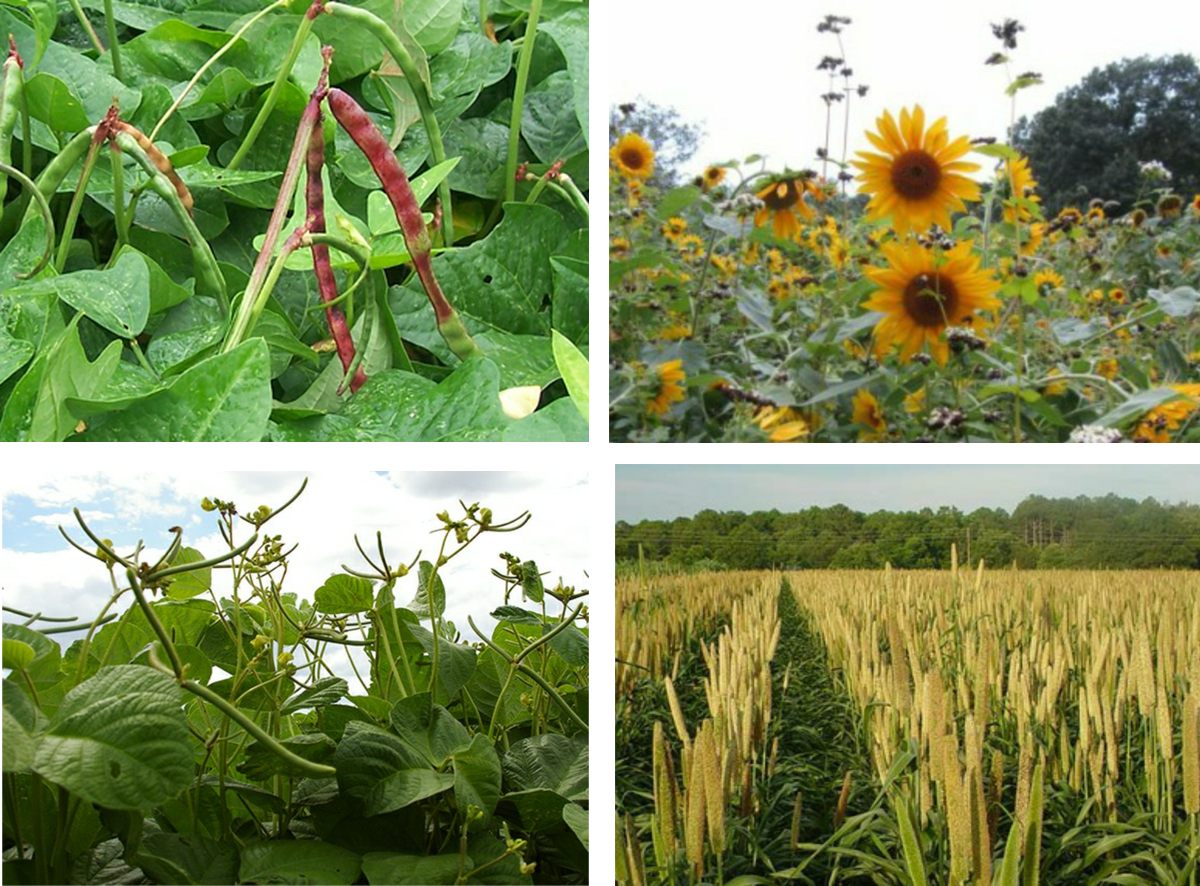

Cover crops are a crop planted primarily to enhance and manage soil fertility, soil quality and tilth, enhances water holding capacity as well as help reduce weeds, pests, and diseases competition. Cover crops are of interest in sustainable agriculture as many of them improve the sustainability of agro-ecosystem attributes and may also indirectly improve qualities of neighboring natural ecosystems. Farmers choose to grow and manage specific cover crop types based on their own needs and goals.
At Parker Seed Company, we take a different approach to cover crops than other companies or organizations. We believe a cover crop should be designed to meet the producers need and production goals. It should be designed for easy planting as well as the products utilized in the blend should be locally adapted to the location planted. We do not promote, and we discourage our customers from using highly diverse cover crop blends instead we promote common sense /agronomically correct blends.
The whole problem with the cover crop market today is everyone is continuously trying to re-create the wheel. When the wheel has been created for centuries. The fact is cover crops are not a new idea or concept as many companies and organizations try to make you believe. Farmers and ranchers have utilized cover crops either directly or indirectly for centuries. Whether its inter-planting fall grazing crops in permanent pastures, an aggressive crop rotation program or farmers simply leaving fields fallow between cropping seasons.
There is no magic bullet and if it sounds too good to be true it probably is. We urge our producers not to fall into the trap or except all the hype which is being promoted. There are benefits producers can receive from cover crops, however cover crops may not be right for all producers. We urge our producers to do their research and due diligence. ALthough there is very little research available for South and Central Texas, there are numerous research studies available online from both private and university research programs and producers can use this research to determine what is best for his own farm or ranch.
It is important to remember the goal of an agriculture producer is to find balance in the practices he or she choose to adopt, he must be efficient, sustainable and most of do what we can to protect and secure our lands and resources for generations to come.
A common sense cover crop blend is just as it sounds simply common sense. They are nothing special, they are simple not exotic and most of all productive. The concept behind these blends is that you match products to provide specific services without completely reducing or diluting the main service or benefit that each species provides. Basically, you balance each product utilized in the blend in an attempt not to fully dilute the service offered for each species. We attempt to match products that have similar growth rates, seed size and varieties that complement each other, not out compete each other. The fact exists, that we can’t efficiently or economically develop a blend that can truly provide every service. We urge producers to choose 1 or 2 main services and focus on doing these services well.
Common sense and research have proven the more diverse a blend becomes, the more dilute the service that each individual species provides. That saying dominate species out competes the lesser aggressive species causing competition for not only space but light, moisture as well as nutrients. It is important to remember, that we are not dealing with perennial species that have the ability to adapt over time, but we are dealing with short term annual species which are terminated before they have the opportunity to fully express themselves.
When we develope our blends we take into conderation the following factors.
Bio Crop Spring Blend is a balanced combination of mixed legumes, annual forages and forbes blened to provide a perfect combination to assist in improving soil tilth, provides excellent weed suppresssion as well as a assist in recycling nutrients and nitrogen fixation.
At Parker Seed Company we take our work serious and we strive to keep our customers happy. In many situations our customers rely on us to help design their blends, However, we also have customers that have their own ideas or experience of what has worked best for them on their property so we offer this service, to help our customers meet their production needs.
Read More
There are wedge lines of redwood from the historic Schwann Mansion in Santa Cruz and from MMA fighter Gray Maynard's house in Capitola, California.
The fin is made from cocobolo and rosewood from the Santa Cruz Guitar Company. It also incorporates redwood reclaimed from John Steinbeck's house in Pacific Grove, California.
Images by Ventana Surf.